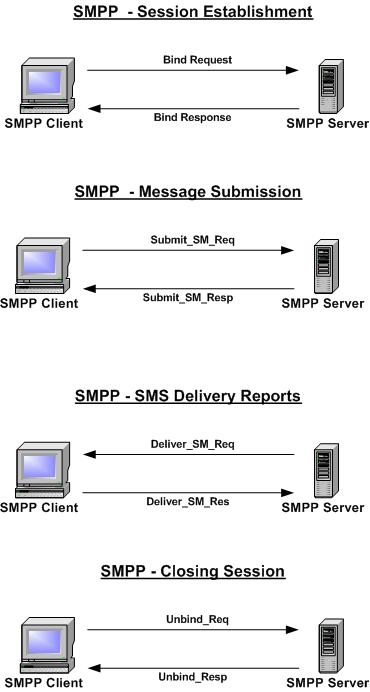About Me
- Peter Stathos
Followers
Powered by Blogger.
11:49 PM | Posted by
Peter Stathos |
Edit Post
We are almost certain that anyone who is involved in sms industry has heard the term SMPP a couple of times. In this article we will try to explain this acronym for the people who don’t know what it means.
The Short Message Peer-to-Peer (SMPP) is actually a telecommunications industry protocol for exchanging SMS messages between SMS peer entities such as short message service centers and/or External Short Messaging Entities. It is usually used to allow third parties (e.g. value-added service providers like news organizations) to submit messages, often in bulk. And this is the official definition of the acronym SMPP protocol. But how does it really help you?
The Short Message Peer-to-Peer Protocol (SMPP) is an open, very lightweight, efficient and high performance protocol for sending large amounts of SMS messages. Connecting with SMPP allows a faster and higher volume of SMS messages to be sent, around 50 messages a second. This actually depends on your SMS provider’s speed.
SMPP is a TCP/IP based application layer protocol which facilitate Non-Mobile entities (or External Short Message Entities, ESME) to send or receive short messages (SMS).Following diagram shows use of SMPP by various ESMEs:
The SMPP protocol defines:
• a set of operations for the exchange of short messages between an ESME and an SMSC
• the data that an ESME application must exchange with an SMSC during SMPP operations.
Following diagram shows use of SMPP by various ESMEs:
Using the SMPP protocol, an SMS application system called the ‘External Short Message Entity’ (ESME) may initiate an application layer connection with an SMSC over a TCP/IP or X.25 network connection and may then send short messages and receive short messages to and from the SMSC respectively. The ESME may also query, cancel or replace short messages using SMPP.
SMPP supports a full featured set of two-way messaging functions such as:-
• Transmit messages from an ESME to single or multiple destinations via the SMSC
• An ESME may receive messages via the SMSC from other SME’s (e.g. mobile
stations).
• Query the status of a short message stored on the SMSC
• Cancel or replace a short message stored on the SMSC
• Send a registered short message (for which a ‘delivery receipt’ will be returned by the
SMSC to the message originator)
• Schedule the message delivery date and time
• Select the message mode, i.e. datagram or store and forward
• Set the delivery priority of the short message
• Define the data coding type of the short message
• Set the short message validity period
• Associate a service type with each message e.g. voice mail notification
SMPP was originally designed by Aldiscon, a small Irish company that was later acquired by Logica (now split off and known as Acision). Nowadays SMPP connections or servers can be provided by many companies in the SMS industry. They usually give this service to their clients as long as they use exclusively the company’s software or gateway to make their sendings.
As far as we know, there is only one company all over the world which can provide to her clients a completely white label SMPP server for their needs, and they can add as many clients/resellers as they wish. We are referring to Extraim.
Extraim is a company dedicated on providing ready SMS software and services to businesses. The people who created this company are in the mobile industry for many years now and the needs of their customers made this company the first one that offers SMPP server connections for rent in the whole world.
They are not only having very flexible solutions on SMPP products, but they also have several other products for the SMS industry. It really worth your while to check on their website and all the products and their features they offer. You can visit them on: www.extraim.com.
Subscribe to:
Comments (Atom)

